Ghirza
Q69121593Ghirza: Roman town in Libya, one of the main archaeological sites of the country.
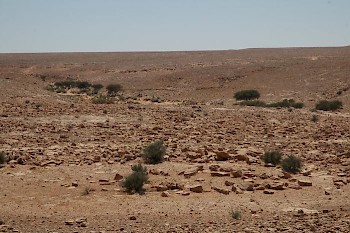
Ghirza, situated near the confluence of the Wadi Zemzem and the Wadi Ghirza, is the modern name of an ancient town in the Libyan desert. It consists of several elements: the town itself; the Northern Necropolis and the Southern Necropolis. The inhabitants were Libyan tribesmen who had become sedentary and had - as is shown by inscriptions - adopted Roman names.
Ghirza became a boom town after 200 CE, when the Roman emperor Septimius Severus had organized the Limes Tripolitanus. Former soldiers were settled in this area, and the arid land was developed. Dams and cisterns were built in the Wadi Ghirza to regulate the flash floods. These structures are still visible, as you can see on the second photo. The farmers produced cereals, figs, vines, olives, pulses, almonds, dates, and perhaps melons.
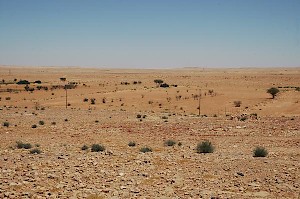
The town itself consists of some forty buildings, including six fortified farms (centenaria). Two of them were really large: the one known as Building 34, measured about 45 x 45 meters; the other large farm, known as Building 31, was even bigger and measured 47 x 47 meters. Because the town also had two monumental cemeteries (called the Northern and Southern Necropolis), it has been assumed that Ghirza was occupied by two clans. Among the ruins was a temple, which may have been dedicated to the Libyan god Gurzil, after whom Ghirza is apparently named.
In the Northern Necropolis, three temple-shaped mausoleums (A, B, C) still overlook the village. They are comparable to the the tomb at Qasr Banat. Their decoration offers a mix of classical architecture and native-style representations of hunting and agricultural activities. In the Southern Necropolis, the mausoleums (e.g., A and G) resembled obelisks.
The town was abandoned in the early Middle Ages, and there was nobody left to loot the site. Later generations, seeing the isolated ruins, thought that the inhabitants had been sinners, and that God had punished them by petrifying their city.
In Graeme Barker e.a., Farming the Desert. The UNESCO Libyan Valleys Archaeological Survey (1996), the town is recorded as Gh127.
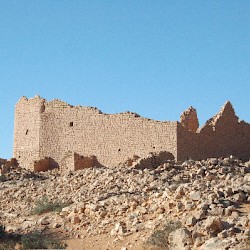 Ghirza town |
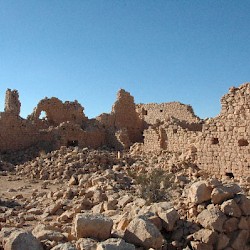 Ghirza town |
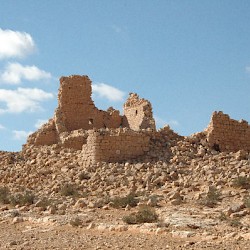 Ghirza town, Building 34 |
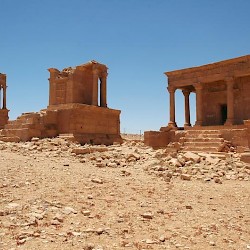 Ghirza, Northern necropolis, mausolea C, B, and A |